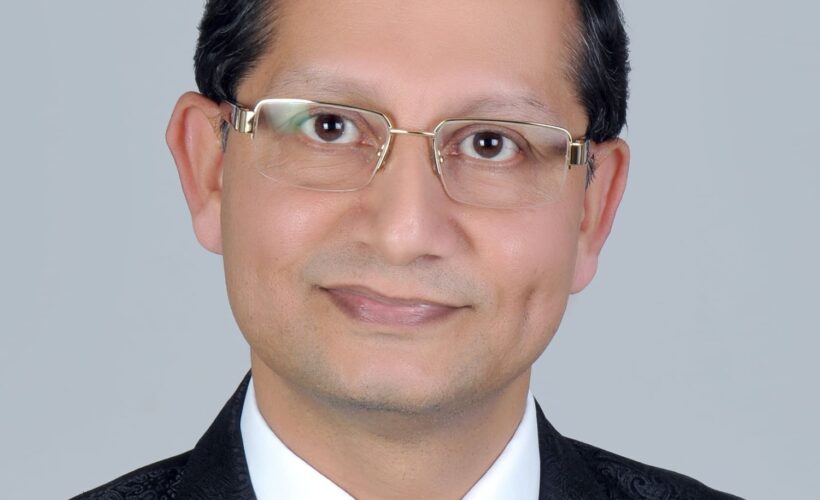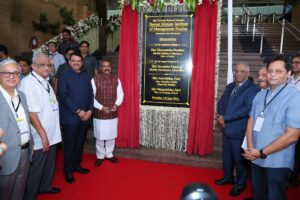
1. What are your expectations from the upcoming budget for higher education institutes?
Last year, a certain percentage of the budget was allocated to the education sector, based on the government’s approach towards education. It is appreciable that last year, there was an increased budget allocation for education sector, which is 2.9% of GDP. However, it was still low. Most developing countries, including the USA (6%) and the UK (4.2% plus), spend an average of around 6% of their GDP on education. To meet global standards, it is expected that our country should also increase its spending on education to around 6% of GDP. We need to take bold steps to ensure adequate spending on education.
2. What major changes/requests do you want to propose for the upcoming budget?
Our syllabus varies in quality across states, and we need a uniform syllabus for all courses across the country. Let’s start with the school level – we have so many boards, including CBSE and state-level boards, and their quality differs vastly. Once students pass out of 10th and 12th and come for competitive examinations, some of them don’t get a level playing field. The foundation of education leaves a lot to be desired, and we need to spend more to improve it. Simply allocating funds is not enough to help the education sector. Unless we think of ‘One India, One Syllabus,’ no amount of funding is going to help in real sense. There needs to be a systemic change, and the centre and state should come on the same page to understand the real issues plaguing our nation’s education system. Moreover, the 2.9% of GDP includes both state government and central government budget on education.
We need to nurture talent in rural India as well and help them compete by improving the quality of education they receive. They get demoralised when they find themselves not on par with students from other boards, whether it’s for UPSC, engineering, or medical entrance exams. A coordinated effort between states and the central government is required to allocate the budget for education accordingly. A sound school education is essential as these students will be joining HIEs. If they get poor-quality education, HIEs will end up getting poor-quality students. We need to bring about strategic changes from the school level itself. Currently, we are probably focusing on mostly the operational part, and we are not giving our talent pool a chance due to the system’s shortcomings. We need to provide equal standards of education to all children in the country.
In traditional degree programmes, we need to focus on out-of-class learning and vocational education and scale it up tremendously. This component has to become an integral part of the syllabus. In Germany, for instance, students are required to invest enough time out of class, for in- company projects, learning real-life skills etc. This is the reason why they learn to be so innovative and make significant research contributions. We need to adopt a research mindset.
It will prepare them to be competitive for all exams, whether in India or abroad. All the coaching nexus will be done away with.
When it comes to research, it looks like that most of the government funding and grants go to government institutes. It is expected to ensure the research grant is given based on merit, whether it is a Government University, Deemed to be University or Private University etc. One of the criteria for transparent and merit based allocation of research grant is that there can be weightage for rankings, like NIRF and NAAC rankings etc. When there are transparent criteria of allocating research grants, then there will not be a perception that Government Universities are unduly favoured in giving research grants.
If there is a perception gap, it needs to be bridged, and any policy needs to be based on merit. Even if the government allocates more funds, there is need to see if it is reaching meritorious institutions or not.
The government’s allocation to research funding should preferably be towards applied research and the one that can be measured, and the next allocation should be based on the outcome achieved. There is a need to see that how many government-funded research project reports, which get submitted, get acted upon. And how many such submitted project reports lead to decision making stage by the concerned stakeholders and what are the measured impacts? If we do not see such activities, then what is the point of funding some of such research projects and having research project reports that remain only on paper? Once these changes are implemented, the transparency and merit-based decision-making will get demonstrated, resulting in highly motivated stakeholders, and leading to significant improvements in research outcomes.
3. How will the above changes help higher education players like you, students and the workforce of India Inc. at large?
If all students from class 1 to graduation to PG level etc., have one syllabus and one quality, it will provide all students with a level playing field, and the industry will get high-quality and high-calibre resources from all over the country. The country’s resources will be better utilised. Imagine the talent pool we will have when every child gets equal opportunities for good quality education! Systemic changes and the strategic actions that we can plan & implement today, will bear fruits in next few years for our country.
About the Author.
Dr. Shubhasheesh Bhattacharya, Campus Director, NMIMS Navi Mumbai.



